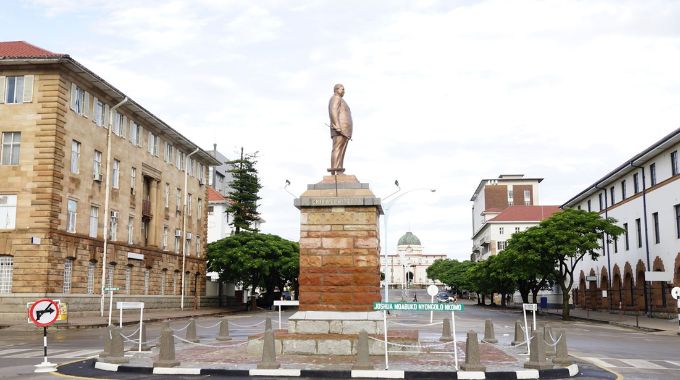Things To Do in Bulawayo
Bulawayo stands as a testament to Zimbabwe‘s rich history, culture, and natural beauty.
As the country’s second-largest city, it seamlessly blends colonial-era architecture with a vibrant arts scene, all while serving as a gateway to breathtaking natural wonders.
The City of Kings, as it is popularly known, offers a plethora of experiences waiting to be discovered.
Below are some of the the places you can visit and activities to partake in if you are visiting.
Explore the Natural History Museum of Zimbabwe
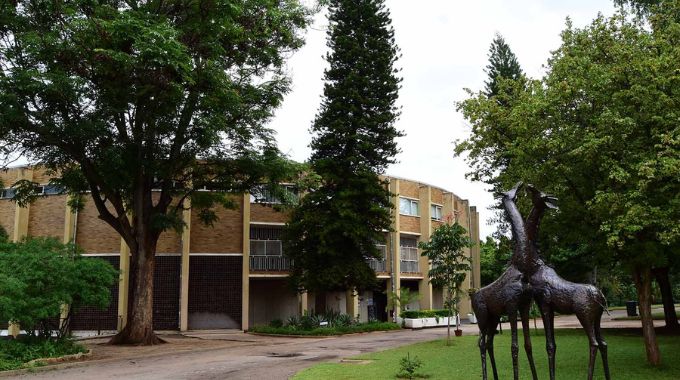

Situated in the heart of Bulawayo, the Natural History Museum of Zimbabwe is a treasure trove of the nation’s rich heritage.
Established in 1964, this esteemed institution is among the largest and most celebrated museums in Southern Africa.
Its vast collections span various disciplines, offering visitors a comprehensive insight into Zimbabwe’s natural and cultural history.
The museum boasts nine public display galleries, each dedicated to a specific theme.
The Geology Gallery, for instance, showcases an impressive array of minerals, including the rare Broken Hill lead and zinc specimens.
A highlight for many is the walk-through mine exhibit, providing a realistic glimpse into Zimbabwe’s mining industry.
In the Livingstone Sango-Moyo Gallery, visitors can marvel at the extensive mammal collections, featuring meticulously preserved specimens that highlight the country’s diverse wildlife.
The Hall of Kings delves into the history of the Ndebele people, offering narratives and artifacts that shed light on their rich cultural heritage.
Beyond its exhibits, the museum is a hub for research, housing departments dedicated to entomology, arachnology, ornithology and more.
For families, the museum offers educational programs and interactive displays, making it a must-visit destination for those keen to know more about Zimbabwe.
Visit Matobo National Park
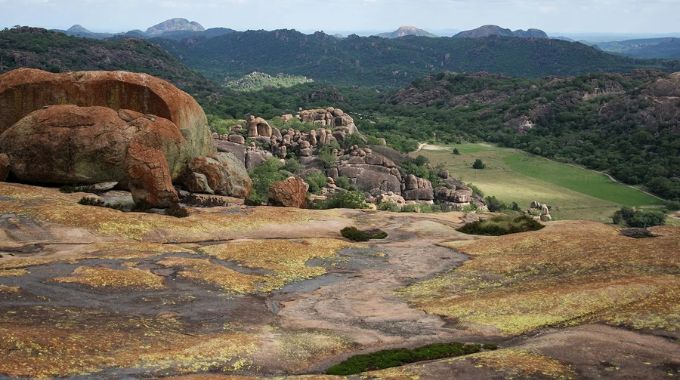

A short drive south of Bulawayo lies Matobo National Park, a UNESCO World Heritage Site.
Renowned for its dramatic granite formations, known locally as kopjes, and its rich biodiversity, the park offers activities for nature enthusiasts and history aficionados alike.
One of the park’s most sought-after experiences is rhino tracking. Accompanied by knowledgeable guides, visitors can embark on foot to observe these majestic creatures in their natural habitat, an exhilarating experience that underscores the importance of conservation efforts in the region.
For those inclined towards history, the park is dotted with ancient rock art sites, some dating back over 13,000 years. These paintings, attributed to the San people, depict scenes of hunting, rituals, and daily life, offering a window into the lives of early inhabitants.
A visit to Matobo would be incomplete without ascending to World’s View, the final resting place of Cecil John Rhodes. Perched atop a granite hill, this vantage point provides panoramic views of the surrounding landscape. While Rhodes’ legacy is complex and often controversial, the site remains a place of reflection and offers insights into the region’s colonial history.
Birdwatchers will find Matobo a paradise, as it hosts one of the world’s highest concentrations of raptors, including the rare Verreaux’s eagle.
With its blend of natural beauty and historical significance, Matobo National Park is a destination that captivates and educates in equal measure.
Step Back in Time at the Bulawayo Railway Museum
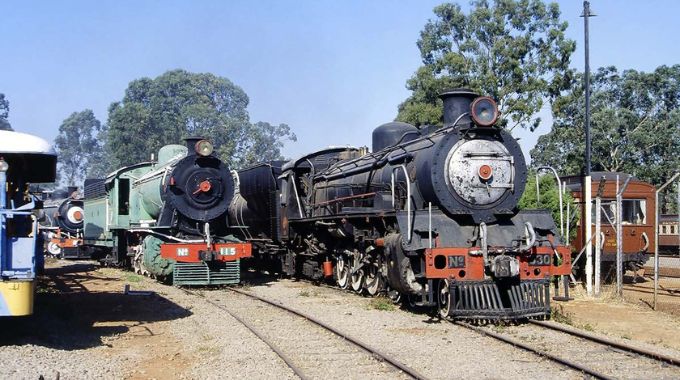

For a journey into Zimbabwe’s colonial past, the Bulawayo Railway Museum offers a captivating experience.
Located near the Bulawayo railway station, this museum houses an extensive collection of vintage locomotives, carriages, and railway memorabilia that chronicle the nation’s rail history.
Among the prized exhibits is the personal railway coach of Cecil John Rhodes, preserved in its original condition. Stepping inside, visitors can glimpse the opulence of early 20th-century travel, with plush interiors and period fittings.
The museum also showcases a range of steam and diesel locomotives, some dating back to the early 1900s.
Detailed information accompanies each exhibit, providing context and stories that bring the machines to life.
The Bulawayo Railway Museum offers a tangible connection to the past, illustrating the pivotal role railways played in the development of Zimbabwe.
Stroll Through Centenary Park
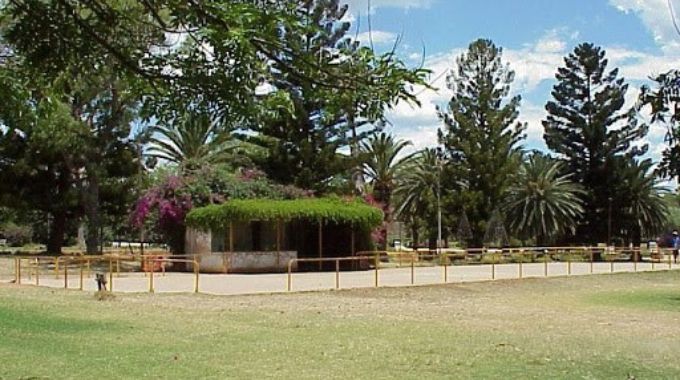

In the heart of Bulawayo lies Centenary Park, a verdant oasis offering respite from the city’s energetic pace.
Established to commemorate the city’s centenary, the park spans several hectares and is meticulously landscaped with a variety of indigenous and exotic flora.
Winding pathways meander through manicured lawns, leading visitors past ornamental fountains, vibrant flowerbeds, and towering trees that provide ample shade.
The park’s serene ambiance makes it a favored spot for leisurely strolls, picnics, and quiet contemplation.
For families, Centenary Park boasts well-maintained playgrounds where children can frolic safely. The park also features a quaint pond, often frequented by ducks and other waterfowl, adding to its charm.
Throughout the year, the park plays host to various cultural events, concerts, and festivals, reflecting Bulawayo’s vibrant community spirit.
Discover the Khami Ruins
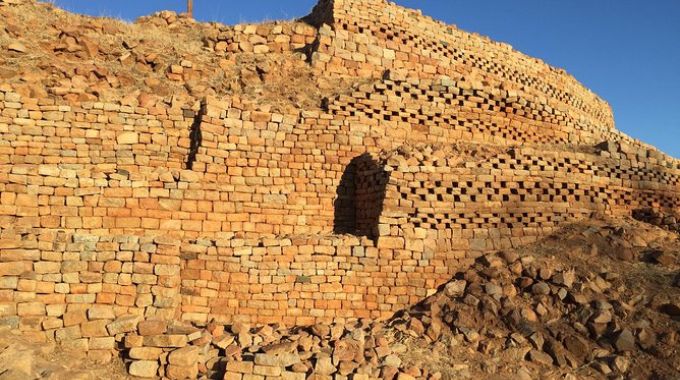

Approximately 22 kilometers west of Bulawayo lies the Khami Ruins, a UNESCO World Heritage Site that offers a profound glimpse into Zimbabwe’s pre-colonial history.
Serving as the capital of the Torwa state between 1450 and around 1683, Khami emerged following the decline of Great Zimbabwe and became a significant center of trade and culture.
The site is renowned for its impressive dry-stone walls, some of which reach heights of up to seven meters.
Unlike the stone structures at Great Zimbabwe, Khami’s architecture features intricate decorative patterns, including checkerboard designs, showcasing the craftsmanship of its builders. The ruins are spread over a 2-kilometer area, nestled in a serene natural setting overlooking the Khami Dam.
Archaeological excavations at Khami have unearthed artifacts from Europe and China, indicating that it was a major center for trade over a long period.
Visitors can explore the remnants of the elite residences, characterized by elevated platforms and decorated stone walls, as well as cross the remnants of the ancient bridge that once connected different parts of the city.
A small on-site museum provides valuable context, displaying artifacts recovered from the area and offering insights into the daily lives of its former inhabitants.
Guided tours are available and recommended, as knowledgeable guides can elucidate the historical significance of the structures and the cultural practices of the Torwa people.
The Khami Ruins not only highlight the architectural prowess of a bygone era but also serve as a testament to the region’s historical significance as a hub of trade and culture.
Experience the Vibrant Arts Scene


Bulawayo, often referred to as the cultural capital of Zimbabwe, boasts a thriving arts scene that reflects its rich heritage and contemporary creativity.
The city’s commitment to the arts is evident in its numerous galleries, theaters, and cultural centers that cater to a diverse range of artistic expressions.
The National Gallery of Zimbabwe in Bulawayo stands as a cornerstone of the city’s artistic landscape. Housed in a building that itself is a piece of architectural art, the gallery showcases a dynamic collection of visual arts, ranging from traditional crafts to contemporary paintings and sculptures.
Regular exhibitions feature works by both established and emerging artists, providing insights into the nation’s evolving artistic narrative.
The city’s theatrical scene is equally vibrant, with venues like the Bulawayo Theatre hosting a variety of performances throughout the year.
From classic plays to modern dramas and musicals, the theater serves as a platform for local talent and a source of entertainment for residents and visitors alike.
Cultural festivals are integral to Bulawayo’s arts scene, with events such as the Intwasa Arts Festival koBulawayo drawing participants and audiences from across the region. This annual festival celebrates a fusion of art forms, including music, dance, theater, and literature, reflecting the city’s diverse culture.
For those interested in traditional crafts, the Mzilikazi Art and Craft Centre offers a glimpse into the country’s artisanal heritage. Here, visitors can observe artisans at work, creating intricate pottery, textiles, and wood carvings, and even purchase unique souvenirs that embody Zimbabwean craftsmanship.
Engaging with Bulawayo’s arts scene provides a deeper understanding of the city’s identity, showcasing its historical roots and contemporary innovations.
Explore Local Street Markets
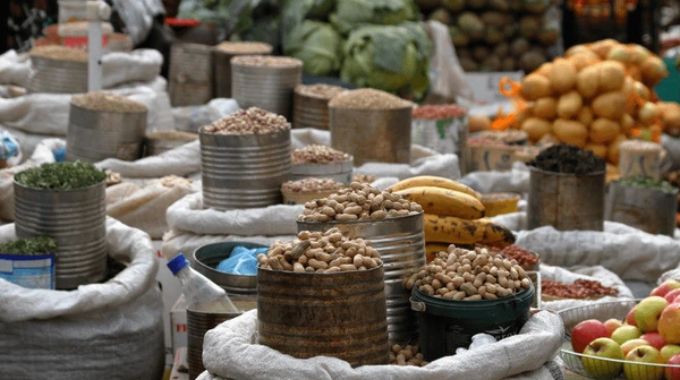

The central business district serves as a bustling hub where vendors and shoppers converge in a vibrant display of commerce and community.
There are areas where you’ll encounter an array of stalls brimming with fresh produce, aromatic spices, and handcrafted goods.
Local farmers proudly display their harvests, from succulent fruits to a variety of vegetables, providing a farm-to-table experience for those keen on sampling Zimbabwe’s agricultural bounty.
Artisans showcase their craftsmanship through an assortment of handmade items, including intricately woven baskets, beadwork, and textiles that reflect traditional patterns and techniques. These unique pieces make for meaningful souvenirs, each carrying a story of cultural heritage and personal artistry.
These markets also offers a selection of street food vendors, where one can savor local delicacies such as sadza (a staple maize dish), grilled meats, and an assortment of snacks that provide an authentic taste of Zimbabwean cuisine.
Engaging with the vendors offers an opportunity to learn about the origins of the products and the traditions they represent.
The dynamic atmosphere, characterized by the rhythmic banter of bargaining and the vibrant displays of goods, provides a captivating glimpse into the daily rhythms of Bulawayo’s residents.
Visit the Mzilikazi Art and Craft Centre
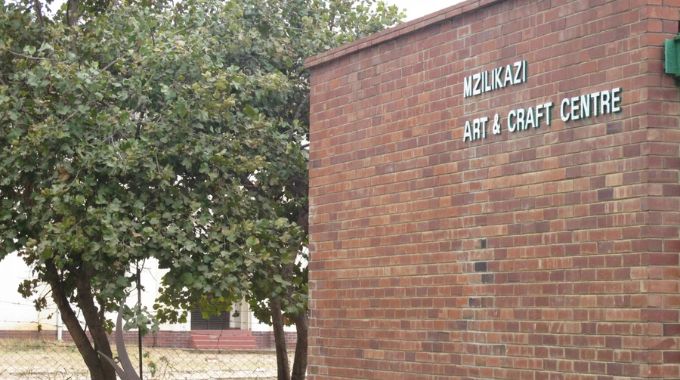

To experience the vibrant artistic traditions of Zimbabwe, a visit to the Mzilikazi Art and Craft Centre is essential.
Established in 1963, the center serves as a hub for local artisans to hone their skills and showcase their creations.
The center offers a variety of handcrafted items, including pottery, textiles, wood carvings, and metal sculptures. Each piece reflects the rich cultural heritage and artistic flair of the region, making it an ideal place to purchase unique souvenirs or gifts.
Visitors have the opportunity to observe artisans at work, gaining insight into the meticulous processes involved in traditional crafts.
The center also offers workshops for those interested in learning specific techniques, providing a hands-on experience that deepens appreciation for Zimbabwean artistry.
Supporting the Mzilikazi Art and Craft Centre not only preserves traditional crafts but also empowers local artists, contributing to the sustainability of the community’s cultural heritage.
Take a Day Trip to Tshabalala Game Sanctuary


For wildlife enthusiasts and nature lovers, a visit to the Tshabalala Game Sanctuary offers a serene escape into the natural beauty of Zimbabwe.
Located approximately 10 kilometers from Bulawayo’s city center along the Matopos Road, this sanctuary provides a convenient yet immersive experience into the country’s diverse flora and fauna.
Covering an area of about 1,200 hectares, Tshabalala is characterized by its thorny bushveld savannah, predominantly featuring Acacia trees—a unique aspect among Zimbabwe’s game parks.
The sanctuary is home to a variety of wildlife, including giraffes, zebras, warthogs, impalas, tsessebes, and other smaller antelope species. Birdwatchers will also find delight in the abundant birdlife, with species such as guinea fowl, francolins, and various waterfowl commonly spotted.
Visitors can explore the sanctuary through several activities designed to offer intimate wildlife encounters. Guided bush walks provide an opportunity to learn about the local ecosystem and observe animals in their natural habitat. For those who prefer a leisurely pace, cycling paths meander through the park, allowing for a tranquil ride amidst the scenery.
Horseback riding is another popular option, offering a unique vantage point to view the wildlife.
The sanctuary is equipped with amenities to enhance the visitor experience. A designated braai area allows for outdoor cooking and picnics, making it an ideal spot for family outings.
Additionally, the on-site refreshment center provides meals and beverages, ensuring that guests can relax and refuel during their visit.
Tshabalala Game Sanctuary also holds historical significance. The area was once inhabited by nomadic Bushmen tribes and later became a settlement for the AmaNdebele people under the leadership of Mzilikazi. Notably, Mzilikazi’s son, Lobengula, spent part of his childhood in this region before ascending to the throne.
A visit to Tshabalala Game Sanctuary offers a harmonious blend of natural beauty, wildlife observation, and cultural history so be sure to include it on your list of things to do in Bulawayo.
Enjoy a Performance at the Bulawayo Theatre
For a taste of the local performing arts scene, attending a show at the Bulawayo Theatre is highly recommended.
Established in the early 20th century, the theater has been a cornerstone of the city’s cultural life, hosting a variety of performances ranging from drama and musicals to dance and comedy.
The venue itself is a charming example of colonial-era architecture, with a cozy auditorium that offers excellent acoustics and sightlines. Local theater groups frequently stage productions here, providing insight into the societal narratives and creative expressions of the community.
The theater’s schedule is diverse, often featuring both classic plays and contemporary works by Zimbabwean playwrights. Attending a performance not only offers entertainment but also supports the local arts scene, fostering the growth of cultural expression in Bulawayo.
Checkout the Restaurants and Nightlife
Bulawayo, often referred to as the City of Kings, boasts a vibrant culinary scene and dynamic nightlife.
Here are some notable establishments that have garnered attention:
- Chief’s Village Garden and Lounge: Since its opening in July 2023, Chief’s Village has quickly become a favorite among locals and visitors alike. The venue comprises a garden and lounge area as well as a luxurious rooftop chill spot. The well-manicured lawns and palm trees of the Bangani Garden provide a serene setting, making it an ideal spot for leisurely afternoons and vibrant evenings.
- The Smokehouse Bulawayo: For those craving hearty meals, The Smokehouse offers a delectable selection of barbecued meats and classic sides. Its relaxed atmosphere and flavorful dishes make it a must-visit for meat lovers.
- King’s Kraal Restaurant: Highly recommended for its lively bar and diverse menu, King’s Kraal provides a memorable dining experience that captures the essence of Bulawayo’s hospitality.
- Olympus Lounge: Established in 2023, Olympus Lounge has quickly become a dominant player in Bulawayo’s nightlife scene. Located in the NetOne building in the CBD, the lounge exudes luxury with its sleek white couches and ancient Greek-inspired decor. It’s an ideal spot for those seeking a chilled and laid-back vibe. The addition of a cocktail bar enhances the experience, offering expertly mixed drinks in a sophisticated setting.
- Private Lounge: Known as Zimbabwe’s premier strip club, Private Lounge offers a unique nightlife experience in Bulawayo. Catering to those seeking a distinctive evening out, the club combines laid-back music with performances, ensuring a memorable night.
- Cotton Kraal: This venue offers a unique setting with its bar and restaurant setup, making it a popular choice among locals. It’s an ideal spot for those looking to enjoy good music, drinks, and a lively atmosphere.
Bulawayo stands as a testament to Zimbabwe’s rich history, culture and natural beauty.
From its informative museums and ancient ruins to its vibrant arts scene and delectable culinary offerings, the city caters to a wide range of interests.
Sources: zimfieldguide.com, zimbabwetourism.net, bulawayopublicity.com, lonelyplanet.com, 263culture.co.zw

